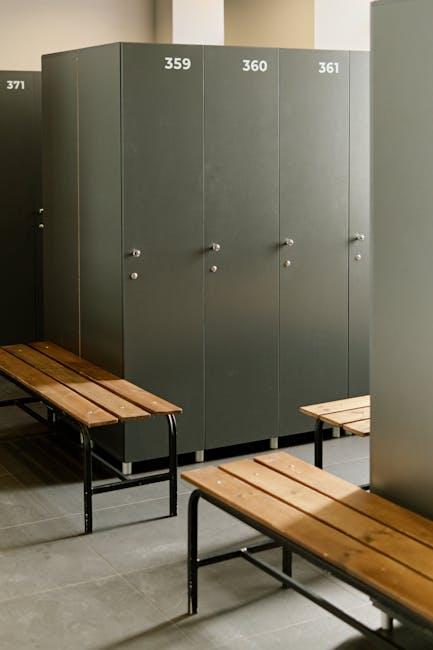In the ongoing debate over educational choices for affluent families, the question of whether private schools offer a superior learning environment compared to their public counterparts remains a contentious issue. This article seeks to dissect the complexities surrounding this topic, examining various factors such as academic performance, social development, and resource availability. While private schools are often perceived as bastions of elite education, boasting smaller class sizes and exclusive programs, public schools present their own set of advantages, including diverse student bodies and robust extracurricular offerings. By analyzing empirical data, parental expectations, and the intrinsic values of both educational systems, this article aims to provide a nuanced understanding of whether private schools genuinely offer a better educational experience for children from affluent backgrounds, or if the distinction is more nuanced than it appears.
Comparative Academic Performance: Unveiling the Educational Outcomes
The debate surrounding the educational outcomes of private versus public schools is as old as the institutions themselves. Affluent families often gravitate towards private schooling, lured by promises of smaller class sizes, specialized curricula, and enhanced extracurricular opportunities. However, does this choice translate to superior academic performance? A closer examination reveals a more nuanced picture. While private schools may boast higher standardized test scores and college acceptance rates, these metrics alone do not paint a complete picture of educational success. Factors such as family involvement, socio-economic advantages, and inherent student motivation play critical roles in shaping academic outcomes.
Furthermore, public schools provide unique benefits that should not be overlooked. They offer:
- a diverse social environment that mirrors real-world demographics,
- access to a wider array of resources through public funding,
- and a robust support system for students with special needs.
These elements contribute to a well-rounded education, fostering resilience and adaptability. the choice between private and public education is not merely a matter of academic performance but involves considering the holistic development of the child within their socio-cultural context.

Socioeconomic Impact: Analyzing the Role of Wealth in Educational Choices
The decision between private and public schooling often hinges on a family’s financial capacity, shaping educational trajectories and future opportunities. Wealth affords access to elite private institutions that promise smaller class sizes, state-of-the-art facilities, and tailored curriculums. These advantages can cultivate an enriched learning environment that is not always available in public schools. However, the mere presence of wealth does not guarantee educational superiority. The effectiveness of a school also depends on other factors such as teaching quality, school culture, and the individual needs of the student.
Several elements play into the decision-making process for affluent families:
- Perceived prestige of private schools and their influence on college admissions.
- Resource availability that supports extracurricular activities and specialized programs.
- Network building opportunities that come from interacting with peers from similar socioeconomic backgrounds.
While wealth can open doors to exclusive educational settings, it’s crucial to evaluate whether these environments align with the child’s learning style and aspirations. Ultimately, the true value of an education is measured not just by the resources available, but by how effectively they are utilized to foster a student’s intellectual and personal growth.

Holistic Development: Evaluating Extracurricular and Social Opportunities
When considering the holistic development of affluent children, the array of extracurricular and social opportunities provided by private schools often stands out. Private institutions frequently boast a diverse selection of activities ranging from arts and sports to niche clubs and international programs. This variety can play a significant role in nurturing well-rounded individuals. Moreover, private schools often emphasize small class sizes and personalized attention, allowing students to explore these opportunities more deeply and meaningfully.
However, public schools, particularly those in affluent areas, should not be overlooked. Many offer rich extracurricular programs and benefit from larger, diverse student populations that enhance social learning. Public schools can foster inclusivity and exposure to a wide range of perspectives, which is crucial for developing social skills and empathy. Key considerations include:
- Accessibility: Public schools often provide equal opportunities for all students to participate in activities, fostering a sense of community.
- Diversity: Exposure to a variety of cultures and socioeconomic backgrounds can enrich social experiences.
- Community Involvement: Strong ties with local communities can enhance real-world learning experiences.
Ultimately, both private and public schools present unique advantages for holistic development. The decision should hinge on the specific needs and interests of the child, alongside the resources available at each institution.
Strategic Recommendations: Navigating the Decision for Affluent Families
When affluent families face the decision of selecting between private and public schools, a strategic approach is paramount. First, evaluate the specific educational needs and aspirations of your child. Does the school offer specialized programs or curricula that align with your child’s interests? Consider the availability of advanced placement courses, arts, or athletic programs that could enrich their educational experience. Affluent families often have access to a wealth of resources, so it’s crucial to match these with the opportunities a school provides.
- Academic Reputation: Analyze standardized test scores, college matriculation rates, and faculty credentials.
- Class Size and Student-Teacher Ratio: Smaller class sizes can lead to more personalized attention, which may be more prevalent in private institutions.
- Extracurricular Activities: Explore the range and quality of extracurricular programs, which can be pivotal in holistic development.
- Community and Networking Opportunities: Private schools often provide a network of affluent peers and alumni, which can be beneficial long-term.
Ultimately, the decision should be grounded in a comprehensive understanding of what each institution offers relative to the goals set for your child’s education. By leveraging the resources at your disposal, you can make an informed choice that optimally supports your child’s growth and success.



